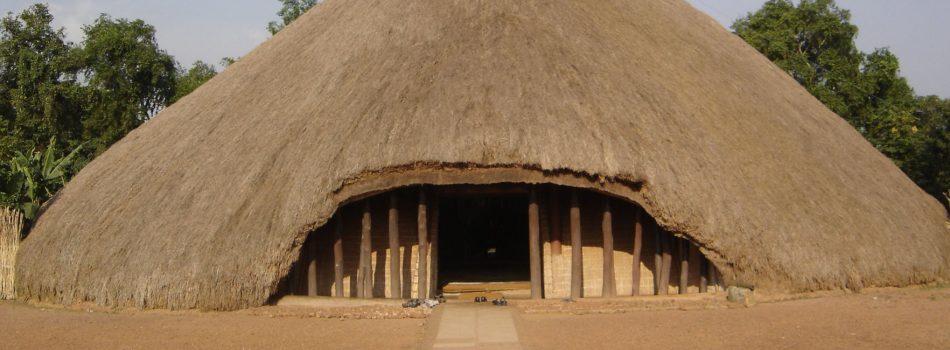
The World Heritage Site comprises around 26 hectares (64 acres) on the Kasubi hill in the city of Kampala, about 5 kilometres (3.1 mi) northwest of the city centre. Most of the site is open agricultural land that is farmed using traditional techniques. One corner contains a royal palace built in 1882 by Muteesa I, the 35th Kabaka of Buganda, to replace a palace built by his built by his father, Ssuuna II in 1820. The new palace became a royal burial ground on his death in 1884. The site is one of 31 royal tombs across the Buganda kingdom since the kingdom was founded in the 13th century. Traditionally, the body of the deceased king was buried in one place, with a separate shrine for the deceased king’s jawbone, believed to contain his soul. Unusually, in a break from tradition, the site in Kampala contains the royal tombs of four Kabakas of Buganda:
- Muteesa I(1835–1884)
- Mwanga II(1867–1903) (died in exile on the Seychelles Islands, and remains returned in 1910)
- Daudi Chwa II(1896–1939)
- Sir Edward Muteesa II(1924–1969) (died in exile in London, and remains returned in 1971).
Descendants of these four Kabakas are buried elsewhere on the site.
The border of the ceremonial site were established in 1882 on Kasubi Hill, also known as the Ssekabaka’s Tombs. The borders are still marked with bark cloth trees (Ficus natalensis), which have protected it from the low-rise residential development that now surround the site on all sides. The main ceremonial area is located to the northwest of the wider site. A gatehouse (Bujjabukula) leads to a small courtyard and the drum house (Ndoga-Obukaba) which houses the royal drums, and then to a second main circular courtyard (Olugya) located on the hilltop, surrounded by a reed fence.
The main central building (Muzibu Azaala Mpanga), some 31 metres (102 ft) in circumference and 7.5 metres (25 ft) high, is located astride the border of the courtyard, on the edge opposite the entrance. It was originally constructed from wooden poles, reed wattle and daub, topped by a thick thatched dome, with straw resting on 52 rings of palm fronds (representing the 52 traditional clans of the Baganda people). Modern building materials were introduced in the last major renovation in 1938 by Kabaka Mutesa II of Buganda, including a steel structure, concrete columns, and bricks, largely concealed behind traditional materials. A low wide arch leads to the sacred spaces within, separated by reed partitions, with bark cloth decorations, and mementos of the kabakas. The tombs are housed in a sacred forest (Kibira) within, concealed from public view by a barkcloth curtain. The floor is covered by lemon grass and palm leaf mats.
The courtyard is also bordered by several buildings of traditional construction, including several “wives houses” for the deceased kabaka’s widows, who tend the family graves. Their houses are traditionally constructed of wattle and daub with straw thatched roofs, although over time some were rebuilt with bricks and metal roofs added, and tombs for royal relations. It is also the home of members of the royal family, and royal officials including the Nalinya (spiritual guardian), her deputy the Lubuga (responsible for coordinating the farming on the site) and her administrative assistant the Katikkiro. It is also a centre for the traditional manufacture and decoration of bark cloth by the Ngo clan and for traditional thatching techniques of the Ngeye (Colobus monkey) clan.

